Mothers of Technology: 10 Female Technology Inventors and Innovators
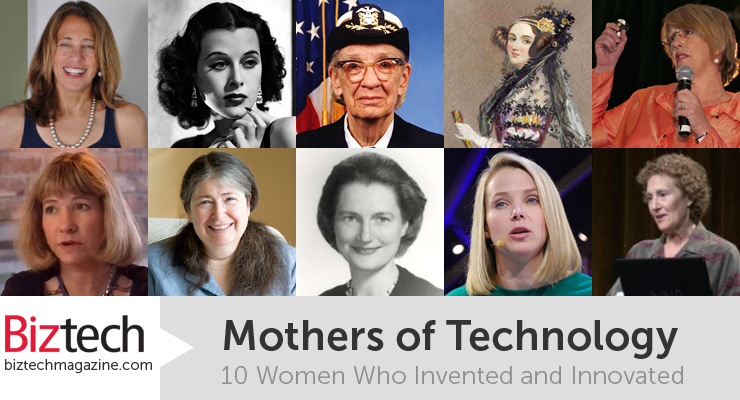
Necessity may be the mother of invention, but the women in technology included on this list became inventors out of curiosity and audacity as well.
When celebrating the heroes of technology and IT, it's often men like Bill Gates and the Steve Jobs who receive the lionshare of the glory. But women have played a significant role in the ongoing evolution of computer technology. So in an effort to pay homage to the contributions of women in technology, we decided to highlight a group of women, who through invention and innovation, brought life to the technology world.
So here’s a toast to 10 mothers of technology. And for an updated look at some new mothers of technology and their impact on tech, check out, "The New Mothers of Technology: 6 Women Who Have Led in Tech Since 2010."
Susan Kare
User Interface Guru
Her impact on technology:
Susan Kare, described by some as “the Betsy Ross of the Personal Computer,” was the designer who helped bring the Apple computer to life with her sophisticated typography and iconic graphic design skills. Working alongside Steve Jobs, she shaped many of the now-common interface elements of the Mac, like the command icon, which she found while looking through a book of symbols.
She also created the Happy Mac icon, which greeted Apple users when they booted their machines, and the trash can icon, which let users know where to put files they no longer wanted. If Jobs is credited with making technology more personable through Apple’s devices, it’s in part because of Kare’s efforts to make the computer feel more like a friend — and less like a machine.
But she didn’t work exclusively on Apple products. In the mid-1980s, after Jobs was forced out, Kare left Apple and worked with Microsoft, where she applied her design skills to humanizing the Windows 3.0 operating system.
Kare’s design work didn’t stop with Apple and Microsoft. Her hand can be seen in many of Facebook’s “digital gifts,” including the friendly rubber ducky. Her most recent digital footprint can be seen in the online media powerhouse Glam Media, where she served as a co-founder and the organization’s creative director.
Where is she now?
Kare owns a digital design firm (kare.com) in San Francisco, and she sells prints of her designs on kareprints.com
Words of wisdom:
“It is possible to teach most people to use one of these computers in about 20 minutes. A lot of that is because you can explain what an icon means and a person can remember it easily.” — Susan Kare on why Macs are so user friendly in an interview from the Computer Chronicles in 1984
Hedy Lamarr
Wireless Visionary
Her impact on technology:
Largely known as a screen star of the 1920s, Hedy Lamarr proved to be more than just a pretty face. She played a key role in the invention of spread-spectrum technology; specifically, by conceptualizing the idea of frequency hopping, which is a method of sending radio signals from different frequency channels.
Lamarr and her co-inventor, George Antheil, developed the technology originally to help the Navy remotely control torpedoes. The key value of frequency hopping was that the randomized channel switching made it difficult for outside agents to understand what was being communicated. It was, in essence, an early form of encryption technology.
The two received a patent on their idea on August 11, 1942, according to the American Heritage of Invention & Technology. But despite lobbying and fundraising efforts on their part, the Navy ultimately passed on the technology.
It was reborn, however, in the late 1950s when engineers at Sylvania Electronic Systems Division revived it, which led to the use of Lamarr’s frequency hopping concept in secure military communications. Her work on spread-spectrum has played a part in many modern wireless technologies, such as Bluetooth, Wi-Fi and Code Division Multiple Access (CDMA).
Where is she now?
After initially receiving very little recognition for her work on spread-spectrum technology, Lamarr was honored with a special award: the Pioneer Award by the Electronic Frontier Foundation in 1997. This long overdue recognition for her scientific endeavors came just three years before her death, in 2000.
Her legacy lives on in the world of wireless technologies, and through the continued efforts of her son Anthony Loder. He recently spoke with CBS News about his mother’s gift for invention, which is the subject of Hedy’s Folly, a new book by Pulitzer Prize–winning writer Richard Rhodes.
“She was such a creative person. I mean, nonstop solution-finding. If you talked about a problem, she had a solution,” Loder said.
Words of wisdom:
“When they called her up to tell her she would get the award, her first words were, Hedy Lamarr being Hedy Lamarr, ‘Well, it's about time.’” — Writer Richard Rhodes recalls Lamarr's response to her award in an NPR story
Grace Hopper
Programming Pioneer
Her impact on technology:
Called the Queen of Software by some and Grandma COBOL by others, Navy Rear Admiral Grace Hopper helped invent some of the early English-language programming languages. She is most famously associated with the Common Business-Oriented Language (COBOL), which was based on the FLOW-MATIC language that she designed back in 1958.
Before the invention of such language-based programming, computers spoke exclusively in binary code, which was illegible to human beings. Hopper was convinced that if programming were produced in a form that anyone could read, then there would be more programmers. It turns out that she was right.
While COBOL isn’t exactly the cutting edge of programming technology today, it still has a faithful following. In fact, in a recent Computerworld survey, 53 percent of the organizations that responded said that they were using COBOL to build new business applications.
Where is she now?
For years, Grace Hopper toured the country, visiting schools and military bases to give lectures on computers and the history of programming languages. She memorably sat down with David Letterman in 1986 and discussed her time spent with the first computer, the Mark I.
Hopper died in 1992 at the age of 85.
Words of wisdom:
“We're only at the beginning. We've been through the preliminaries. We've got the Model T. That's where we are now.” — Grace Hopper said in a 1982 interview with 60 Minutes
Ada Lovelace
Algorithm Enchantress
Her impact on technology:
Ada Lovelace was unique in that she developed an algorithm for a computer that didn’t yet exist — an accomplishment that some say qualifies her as the world’s first computer programmer.
Born to English nobility in 1815, Lovelace was put to work by Charles Babbage in 1843, documenting his never-to-be-realized “computer,” the Analytical Engine. Starting with a document written in French by Luigi Menabrea, an Italian mathematician, Lovelace added extensive notes to the English translation, including the world’s first computer algorithm.
The Analytical Engine was intended to count Bernoulli numbers, but Babbage was unsuccessful in getting the funding to build his machine. Notably, Lovelace was able to see the potential for the computer beyond simple math.
“Many persons who are not conversant with mathematical studies imagine that because the business of [Babbage’s Analytical Engine] is to give its results in numerical notation, the nature of its processes must consequently be arithmetical and numerical, rather than algebraical and analytical. This is an error. The engine can arrange and combine its numerical quantities exactly as if they were letters or any other general symbols; and in fact it might bring out its results in algebraical notation, were provisions made accordingly,” Lovelace wrote in the Sketch of the Analytical Engine Invented by Charles Babbage, Esq.
Where is she now?
In 1852, Lovelace died of uterine cancer at the age of 36.
Her work went largely underreported for many years, but today she’s celebrated each year on Ada Lovelace Day and memorialized by the object-oriented programming language that bears her name, Ada.
Four generations later, one of Lovelace’s descendants, Honora Smith, is following in her footsteps by carving out a career in math and computer science, with a focus on operations research.
Words of wisdom:
“A new, a vast, and a powerful language is developed for the future use of analysis, in which to wield its truths so that these may become of more speedy and accurate practical application for the purposes of mankind than the means hitherto in our possession have rendered possible.” — Ada Lovelace wrote on the possibilities of a machine-driven computing language in her notes on the Analytical Engine
Mary Lou Jepsen
Screen Display Rebel
Her impact on technology:
Mary Lou Jepsen knows that the screen is the gateway to all of the transformative powers that a computer can hold. She co-founded and served as the chief technology officer of MicroDisplay in 1995, where worked on creating small screens. She later ran the display division at Intel, until she was spirited away by a bold dream: a computer for every child.
As co-founder of One Laptop Per Child, a nonprofit organization with the mission of providing children worldwide with affordable, green notebook computers, Jepsen gained attention for her hardware prowess in producing the XO, one of the lowest-power, lowest-cost notebooks ever made.
The prototype device was unveiled at the UN by Kofi Annan, and Jepsen won the backing and support of major manufacturers which allowed OPLC to kick-start high-volume production of its devices.
Where is she now?
Jepsen left OPLC in 2008 to start Pixel Qi, a for-profit company that leveraged many of the technological advances she achieved with the XO.
As the company begins rolling out its end-user devices with Jepsen’s displays, she couldn’t be prouder of the technological milestones.
“We have pushed the power consumption of screens down by up to 10 times in products we are shipping today, and are poised to bring that down another 10 times using our new architectures,” Jepsen told BizTech magazine in a recent interview. “We have shipped 3 million units, all readable in direct sunlight, and are the first truly fabless-display company using existing high-volume machinery at the factories in novel ways to achieve this dramatic power savings.”
Words of wisdom:
“Devices should not need power adaptors. The calculator is the correct model. A little room light on a solar cell is all that is needed to power a calculator. Wouldn’t it be great if we could do the same for cell phones, laptops, tablets and personal medical devices? To get there, we will need to use better solar cells and batteries, but the screens must decrease the power consumption 100-fold to enable this, as we are doing at Pixel Qi.” — Mary Lou Jepsen said in a recent interview with BizTech magazine
Roberta Williams
Gaming Genius
Her impact on technology:
Adventure gaming isn’t as popular now as today’s hot first-person and third-person shooter games, like “Call of Duty.” But there was a time when an adventure game was all that geeks could talk about.
Perhaps best known for her adventure game series “King’s Quest,” which went all the way to an eighth sequel, Roberta Williams was a pioneer and visionary in creating and popularizing this niche of PC games. Sierra On-Line was the name of company (later known as Sierra Entertainment) that Williams co-founded with her husband, Ken Williams. Together, they helped shape the history of video games with their complex puzzles and detailed storylines.
You can see hints of Williams’ ideas and concepts in other gaming genres, like fighting games, which almost always include a “quest” mode, in which the fighter must battle his way through a series of bouts and achievements to seal his victory. You can also draw a link to our current obsession with gamification in many nongaming contexts. Williams’ games taught logic and problem-solving skills, but made it seem like an adventure the entire time, in much the same way that gamification transforms seemingly mundane things like, location check-ins, into an exciting quest to collect digital badges.
Where is she now?
Roberta Williams bowed out of game development in 1999, after 20 years in the industry developing games for the original IBM PCjr, the Tandy 1000, the Amiga, the Apple II and the Sega Master System, among others.
She granted a rare interview to Adventure Classic Gaming in 2006, in which she talked about her legacy and her thoughts on the genre. Though she’s no longer active as a game designer, Williams made it clear that she considers this work to be one of the greatest achievements of her life.
“The experience of creating my adventure games was, other than marrying my husband and bringing into the world my two sons, the most fulfilling, wonderful experience I could ever have had,” Williams said.
Words of wisdom:
“My definition of an adventure game is really an interactive story set with puzzles and obstacles to solve and worlds to explore. I believe that the ‘true’ adventure game genre will never die any more than any type of storytelling would ever die.” — Roberta Williams said on the future of adventure games in an interview with Adventure Classic Gaming
Radia Perlman
Networking Maven
Her impact on technology:
Network engineer Radia Perlman helped make Ethernet technology a household name. Her Spanning Tree Protocol (STP) made it possible to build massive networks using Ethernet by creating a mesh network of layer-2 bridges and then disabling the links that aren’t part of that tree.
This networking innovation had a significant impact on network switches, which has led some to call Perlman the Mother of the Internet — a title that she eschews.
“It's overreaching because I don't think any single individual deserves credit for inventing the Internet. Many people had large roles, including, actually, Al Gore, and in a sense it was something that was inevitable,” Perlman said in an Intel Free Press story.
Where is she now?
Perlman is currently an Intel fellow, helping the company improve its network and security technologies.
Perlman recently developed the new TRansparent Interconnection of Lots of Links (TRILL), a new standard for data center connectivity that could replace her earlier STP invention.
Words of wisdom:
“The world would be a better place if more engineers, like me, hated technology. The stuff I design, if I'm successful, nobody will ever notice. Things will just work, and be self-managing.” — Radia Perlman on good technology being invisible in an IT World story
Dr. Erna Hoover
Telephony Hero
Her impact on technology:
Dropped calls and busy signals are an annoyance that most could do without. But we’d have a lot more of them if it weren’t for Dr. Erna Hoover. While working at Bell Laboratories, she invented a telephony switching computer program that kept phones functioning under stressful loads.
“I designed the executive program for handling situations when there are too many calls, to keep it operating efficiently without hanging up on itself. Basically it was designed to keep the machine from throwing up its hands and going berserk,” Hoover told the New Jersey Star-Ledger.
Her 1971 patent for this technology was among one of the first software patents ever issued. Even more impressive: She worked on her idea while still in the hospital following the birth of her second daughter.
Where is she now?
In 2008, Hoover was inducted into the National Inventors Hall of Fame in Akron, Ohio, for her work on telephony. At 86, she is now retired.
Words of wisdom:
“When I was hired, the glass ceiling was somewhere between the basement and the sub-basement.” — Dr. Edna Hoover said in the New Jersey Star-Ledger on her experience with the glass ceiling as a woman in technology IT World story
Marissa Mayer
Search Siren
Her impact on technology:
Marissa Mayer is Google’s first female engineer (she’s actually employee number 20), having joined the search-engine superstar back in 1999, when it was still a startup.
Now vice president of location and local services, Mayer leads product management and engineering for a variety of search products, including Google Maps, Local Search, Google Earth, Street View and Latitude. Her talents in user interface design and product vision have helped keep Google at the top as a leading web, mobile and search company.
At 36, she is the youngest member of Google’s executive operating committee, and an inspiration to women aspiring to careers in technology.
“The number one most important thing we can do to increase the number of women in tech is to show a multiplicity of different role models," Mayer said in article for The Huffington Post. “The stereotype of that very complete and rigid picture of what being a computer scientist means really hurts people's understanding and ability to identify with the role and say, ‘Yes, this is something I can be in and want to be in.’”
Where is she now?
Mayer continues her work on local, maps and search-based products at Google. She was also recently named to Wal-Mart’s board of directors.
Words of wisdom:
“It’s important to explore some of these far-flung ideas. And I’ve also been at Google long enough now that I’ve seen that some of those far-flung ideas do become core.” — Marissa Mayer said on the importance of companies experimenting at Le Web 2011
Barbara Liskov
Computing Virtuoso
Her impact on technology:
As one of the first women to earn a computer science Ph.D., Barbara Liskov has been an IT trailblazer from early on.
Liskov has several notable achievements under her belt, including the invention of CLU, a programming language that helped lay the foundation for object-oriented programming; Argus, a programming language, largely an extension of CLU, that supports distributed programs; and Thor, an object-oriented database system.
These advances in object-oriented programming have contributed to the wealth of many modern OOP-based languages and operating systems, such as Mac OS X, Objective-C, Visual Basic.NET and Java.
Where is she now?
At 72, Professor Liskov continues her research at the Massachusetts Institute of Technology. In 2008, she was honored with the A.M. Turing Award, an annual recognition given by the Association for Computing Machinery that many consider to be “the Nobel Prize of computing”; and in 2012, she was inducted into the National Inventors Hall of Fame for her contributions to programming languages and system design.
Words of wisdom:
“My work on programming languages has always forced me to think in terms of what’s the interface? Is this a nice, simple thing? How do you trade off the expressive power versus the ease of use and so on? And this is very useful in the systems domain, as well as in the programming language domain.” — Barbara Liskov said on shifting from programming to systems at a OOPSLA Keynote





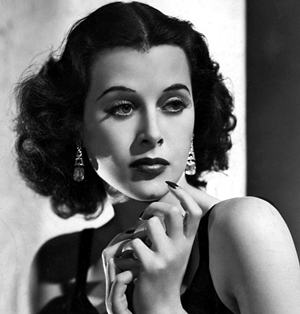
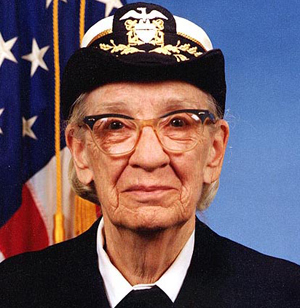
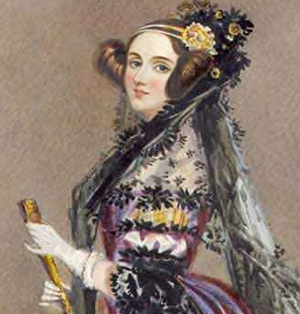
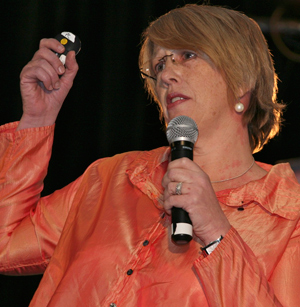
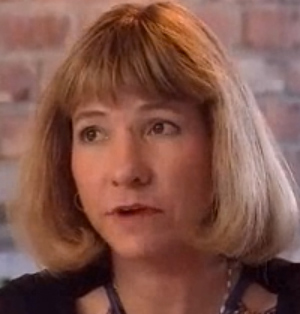

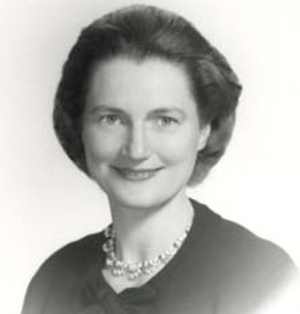
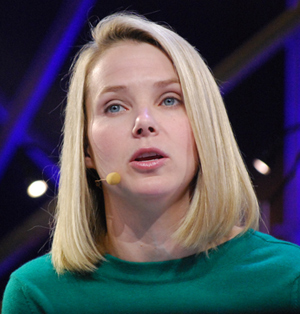
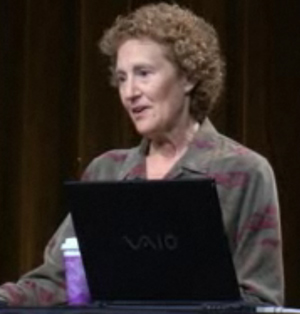

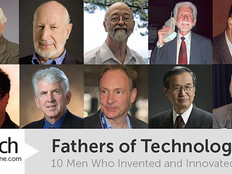
![Why Startups Need a Woman’s Touch [#Infographic]](/sites/biztechmagazine.com/files/styles/related_stories_thumb/public/articles/2013/03/women-in-startups-400.jpg?itok=kRhmGBJa)
![The Impact of Women-Owned Small Business [Infographic] The Impact of Women-Owned Small Business [Infographic]](/sites/biztechmagazine.com/files/styles/related_stories_thumb/public/articles/2012/07/amex-womenownedbiz-400.jpg?itok=YwLfub5v)
